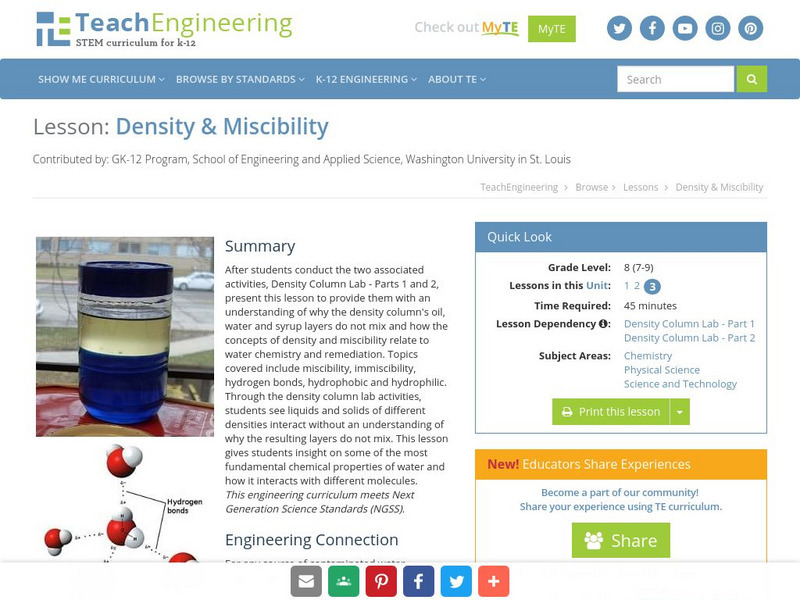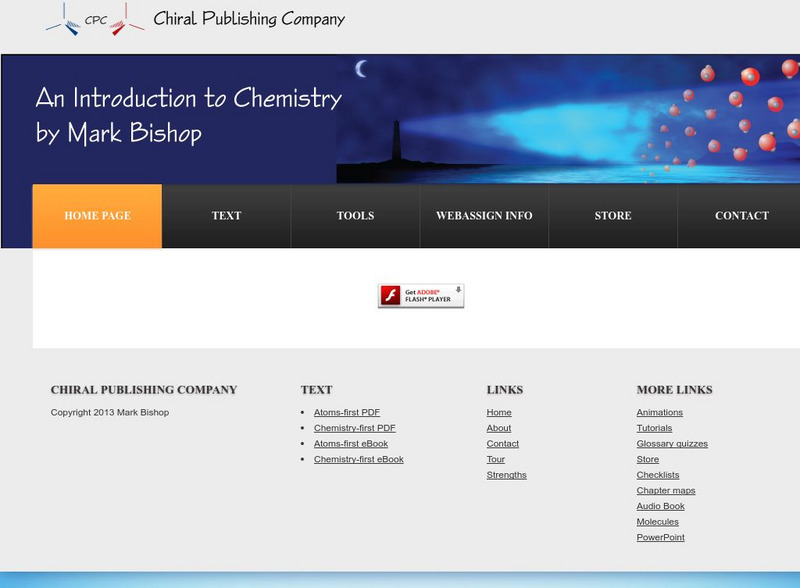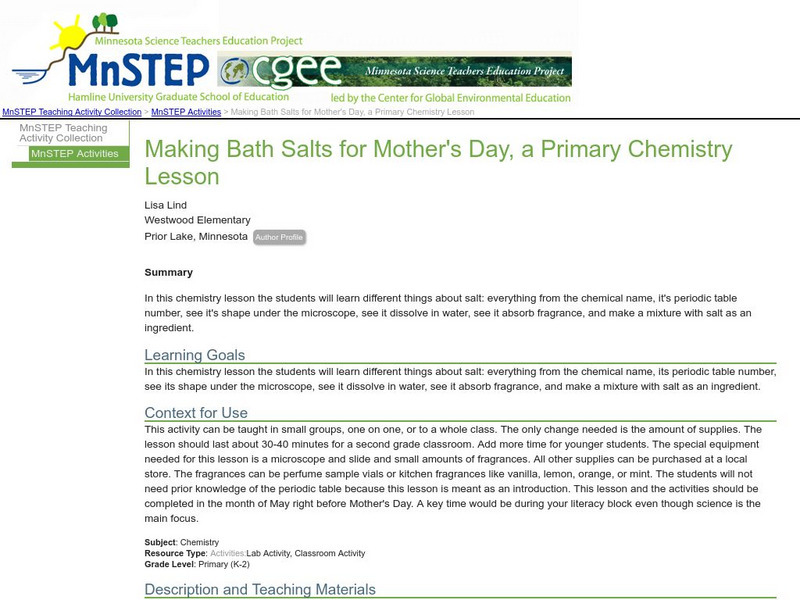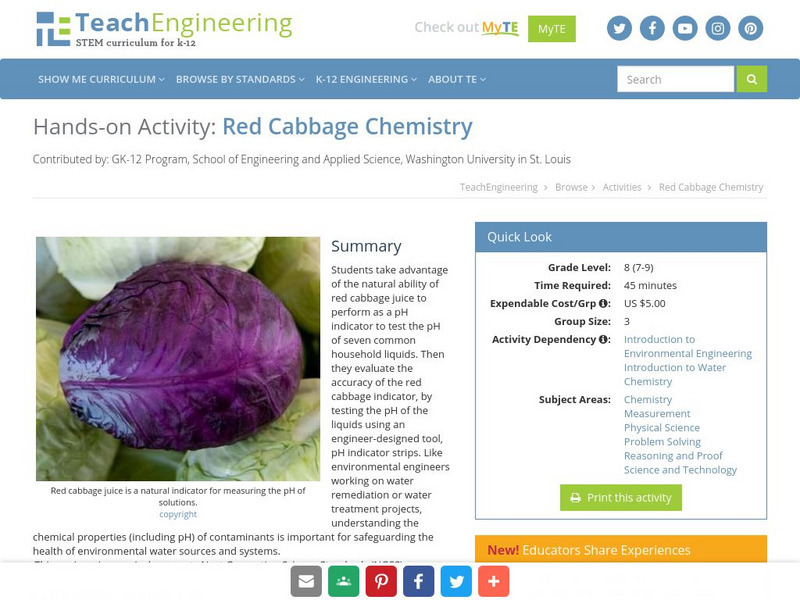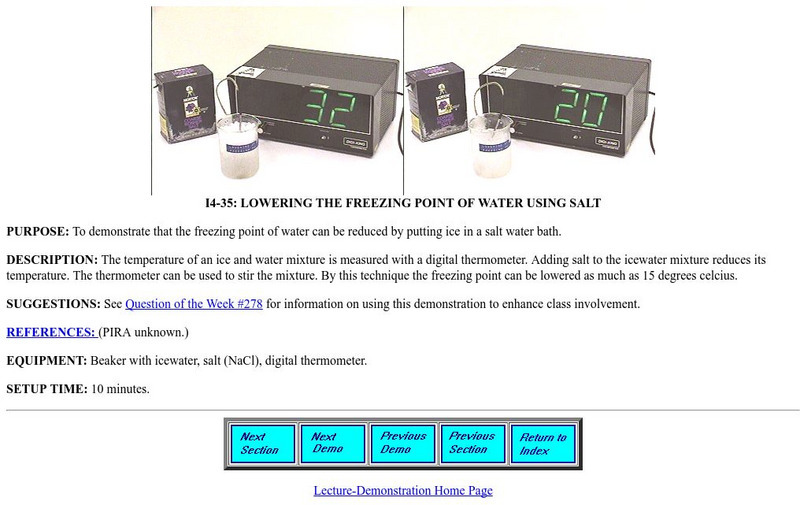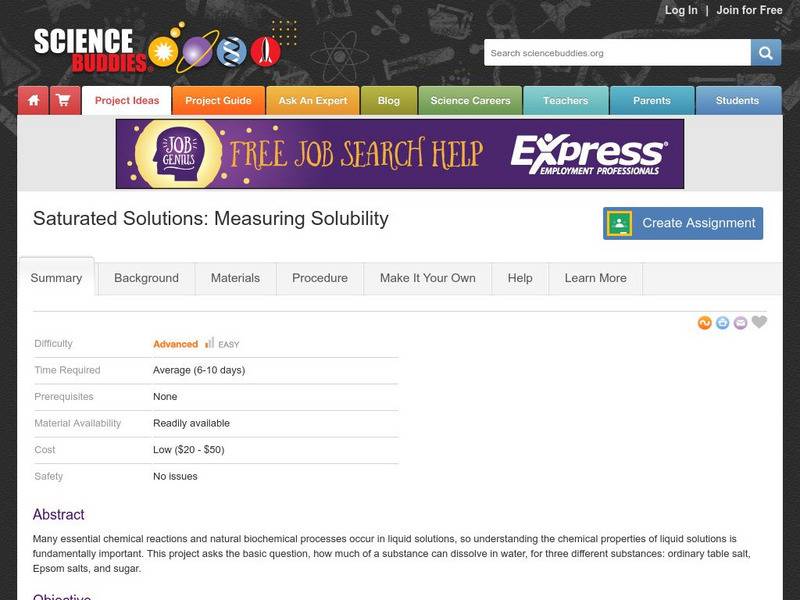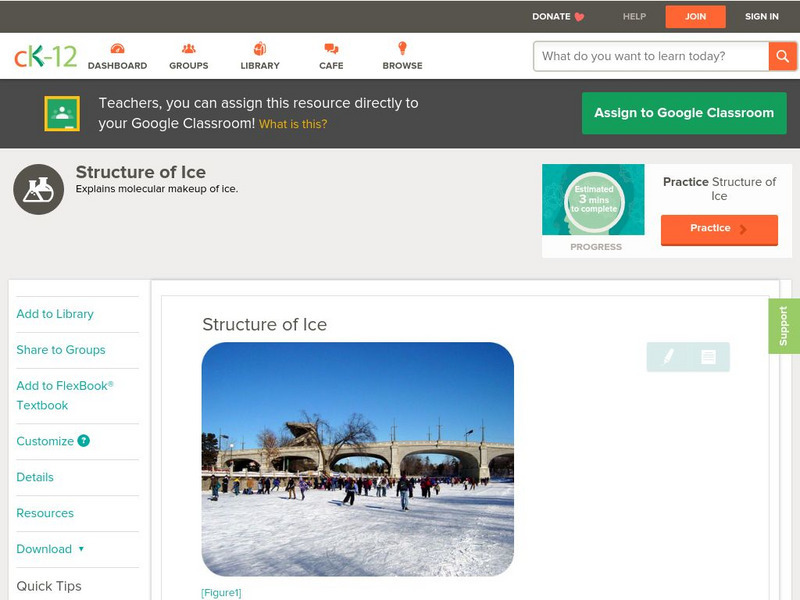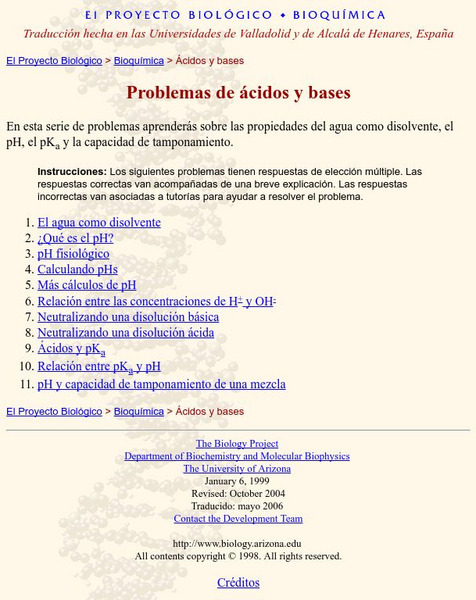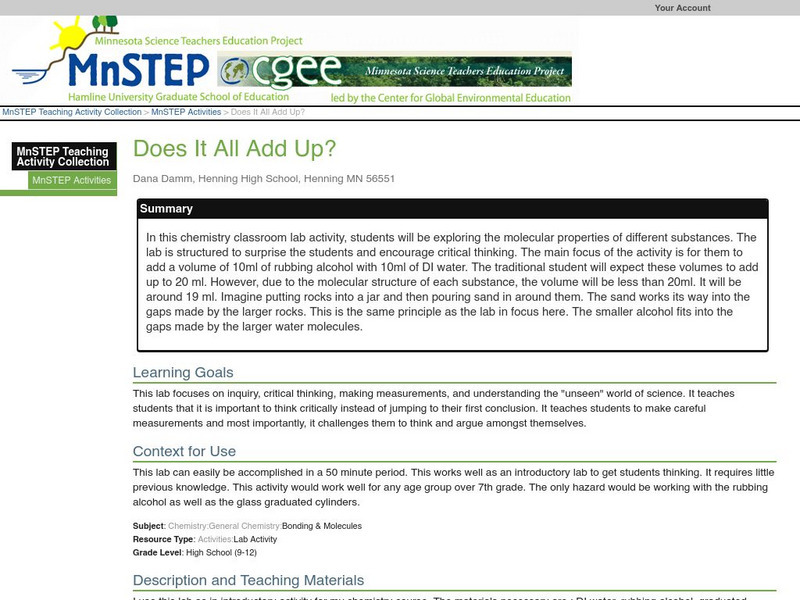Hi, what do you want to do?
TeachEngineering
Teach Engineering: Density & Miscibility
After students conduct the two associated activities, Density Column Lab - Parts 1 and 2, present this lesson to provide them with an understanding of why the density column's oil, water and syrup layers do not mix and how the concepts...
CK-12 Foundation
Ck 12: Chemistry: Physical Properties of Water
[Free Registration/Login may be required to access all resource tools.] Covers physical properties of water, hydrogen bonding, surface tension, and vapor pressure.
Chiral Publishing
Chiral Publishing: An Introduction to Chemistry: The Structure of Water
An interactive animation showing some of the properties of water. See how the particles of water molecules move and stick together.
Science Education Resource Center at Carleton College
Serc: Making Bath Salts for Mother's Day, a Primary Chemistry Lesson
What do you know about salt? In this chemistry instructional activity, students will learn different things about salt: the chemical name, it's periodic table number, it's shape under the microscope, how it dissolves in water, and how to...
Chem Tutor
Chem Tutor: Chemistry: States of Matter
This lesson focuses on the states of matter: solids, liquids, and gases. It also discusses the Kinetic Theory of Matter, Thermodynamics, Triple point, Phase Change Graphs and the Heating Curve of Water. It provideds adrawing of a heating...
American Chemical Society
Middle School Chemistry: Lesson Plans: Can Liquids Dissolve in Water?
Lesson plan with mulitmedia links in which young scholars identify and control variables to help design a solubility test for different liquids in water.
American Chemical Society
Middle School Chemistry: Molecules Matter
Students observe and discuss water on the molecular level using the idea that water is composed of tiny molecules that are attracted to one another.
TeachEngineering
Teach Engineering: Red Cabbage Chemistry
Students take advantage of the natural ability of red cabbage juice to perform as a pH indicator to test the pH of seven common household liquids. Then they evaluate the accuracy of the red cabbage indicator, by testing the pH of the...
American Chemical Society
Middle School Chemistry: Temperature and Density
Observe how heating and cooling affect the density of water. Combine the concepts of temperature, molecular motion, and density to learn that hot water is less dense than room temperature water and that cold water is more dense.
American Chemical Society
Middle School Chemistry: Finding Volume the Water Displacement Method
Discover how water displacement can help scientists accurately measure volume.
American Chemical Society
Middle School Chemistry: Can Gases Dissolve in Water?
Use this interactive animation to find out about whether or not gases dissolving in water.
American Chemical Society
Middle School Chemistry: Surface Tension
Explore the chemical properties involved in surface tension.
University of Maryland
Lowering the Freezing Point of Water Using Salt
A page from the University of Maryland Physics Lecture Demonstration Facility. Provides directions for a teacher demonstration of the effect of an ionic solute upon the freezing point of water. Shows apparatus and set-up; provides...
University of Arizona
Ua: Chemistry Tutorial
This general tutorial begins with an explanation of the polarity of the water molecule and the effects this polarity has on the properties of water. Goes on to introduce organic molecules and has a thourough tutorial on the third page.
Science Buddies
Science Buddies: Saturated Solutions: Measuring Solubility
Many essential chemical reactions and natural biochemical processes occur in liquid solutions, so understanding the chemical properties of liquid solutions is fundamentally important. This project will challenge you to discover how much...
CK-12 Foundation
Ck 12: Chemistry: Structure of Ice
[Free Registration/Login may be required to access all resource tools.] Covers structure of ice and hydrogen bonding in ice.
National Institutes of Health
Ncbi: The Molecular Biology of the Cell: The Chemical Components of a Cell
Advanced chapter of the book "The Molecular Biology of the Cell" describes and provides illustrations of our most current understanding of the chemical makeup of cells and their components. Explains in detail how electron activity keeps...
Chem Tutor
Chem Tutor: States of Matter
A very descriptive site that allows students to understand the different states of matter at the atomic level. Also discusses the process of phase changes and displays phase change graphs. Thermochemistry is also touched upon for high...
University of Arizona
University of Arizona: Problemas De Acidos Y Bases
Learn about the solvent properties of water, pH, pKa and buffering capacity with a series of problems. The correct answers for the multiple choices problems are reinforced with a brief explanation and the incorrect answers are linked to...
Other
Science House: Ice Cream
Experiment shows students how to use the lowered freezing point of water to chill another mixture (ice cream) to the solid state. Teacher's notes provide background information.
Science Education Resource Center at Carleton College
Serc: Does It All Add Up?
In this chemistry classroom lab activity, students use critical thinking to investigate the molecular properties of different liquids: rubbing alcohol and water.





